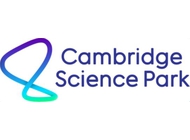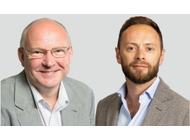Cambridge Heartwear: Following the beat
- Date 24 Aug 2017
Wearable heart monitoring technology and artificial intelligence from Cambridge Heartwear
Cambridge Heartwear is hoping to increase detection of irregular and dangerous heart rhythms and reduce the impact of stroke with an innovative new monitoring device, coupled with cutting-edge artificial intelligence algorithms to make diagnosis in real time. Catalyst spoke to the co- founder Dr Rameen Shakur about med-tech, heart monitors, clinical problem-solving and the Cambridge scene.
Catalyst: Cambridge Heartwear is developing a wearable medical device to detect irregular heartbeats – can you tell us how you got started?
Rameen: My background is as a clinical academic in cardiovascular regeneration and cardiology at the University of Cambridge. My specialist interest is in electrophysiology and inherited cardiac disorders of the heart. In particular, I am interested in developing new clinical pathways, therapies and in understanding the mechanisms to treat the underlying biology behind these not-so-rare disorders.
Why are irregular heartbeats so important? We know from national and international data that over 80% of people who either sadly die or are left with severe neurological deficits following a stroke had an irregular heartbeat as the underlying cause. The association is very strong, with 1-2% of the UK’s over-65-year-olds having such a rhythm. Worryingly, this figure is set to rise to 5% by 2025, due to obesity and the poor lifestyle epidemic. This is a global problem. However, very often, we only diagnose such rhythms when someone has already had a stroke.
Consequently, it makes sense to pick up this condition before someone has a stroke and put preventative treatment in place. Unfortunately, the technology and clinical care systems we have in place aren’t really doing this – so solving this clinical problem was the reason for the birth of Cambridge Heartwear.
Catalyst: Can you say a bit more about the way this problem is currently approached in the NHS?
Rameen: We measure the rhythm of the heart through an electrocardiogram [ECG]. If we want to take an ECG as someone is going about their daily business (rather than while resting in a GP surgery), we need to use a device called a Holter monitor. This requires fixing 12 leads on to the patient’s chest and carrying around this rather cumbersome device that only has a few hours’ power.
To fit a Holter monitor you need to be referred by your GP to a cardiology department, which could mean a three- to four-week wait if you’re lucky. Then you need to have that data interpreted – it could be more than a month-and-a-half between the decision to take an ECG and actually having a diagnosis as to whether atrial fibrillation is present or not. The data it provides is good, but because you don’t wear it for long, the irregularity can be missed. And it’s also a very expensive piece of equipment; typically they cost around £1,500- £2,000.
Catalyst: So how did you come upon an alternative to this kind of approach?
Rameen: The Holter monitor seemed rather arcane and expensive to me and it got me thinking. I’m not an engineer, but given my clinical experience I knew the problem and the process. So I thought:
“Why not try to make even just a proof-of-concept device that would be more accessible to patients?” Something that they could wear, and, most importantly, would give us real-time data for heart rhythms in three individual positions around the heart. So that’s what I did.
It’s a very different kind of device. There are no leads, so it’s much more comfortable to wear and easy to fit. Everything is enclosed in a waterproof casing, so it’s very robust and the data produced is much more sensitive as we have used our knowledge of clinical anatomy and electrophysiology to place leads for maximal signal output. This data is wirelessly streamed in real time to the cloud where our next bit of innovation, the use of novel algorithms and artificial intelligence, is able to identify aberrant rhythms just as a physician would. Now we’re the only company with not just one but multiple independent sensors to measure heart rhythms on a wearable device. That means we can triangulate the readings to produce much more specific and sensitive data.
Catalyst: Can you say more about these novel algorithms and artificial intelligence?
Rameen: It was obvious to me from the start that analysing the data effectively was one of the most important issues. If you’re wearing an ECG over a period of time, you are collecting a huge amount of data. And finding an irregularity amongst all the normal rhythms can be like looking for a needle in a haystack. I wanted to automate this process, helping the physician and patient in getting a diagnosis and therefore starting on treatment.
That’s the reason I began a research collaboration with Professor Roberto Cipolla, who is a world leader in computer vision and real-world applications. As two academics and with students from the Engineering Department, we discussed the problem and we came up with the solution. It led to us founding Cambridge Heartwear and we have now developed some powerful algorithms that are able to interpret this data on the cloud as an automated system.
Catalyst: What will this mean for the patient and the doctor from a clinical perspective?
Rameen: What we propose is to quicken the diagnostic process and be disruptive in the clinical care process. We have made this device for use in primary care and to therefore offload the burden for cardiology departments. The device will gather real-time sensitive and specific data and it interprets this data to spot whether you have an irregularity or not, without the need for a specialist assessment. This information will be accessed immediately by your GP, who can then instigate treatment or refer you to a cardiologist if necessary. It saves time, it’s user friendly and it’s also important for our dream of having this in the NHS as a screening tool, especially given it is so much cheaper.
Catalyst: What stage are you at now in the product development cycle?
Rameen: We’ve already conducted sensitivity and specification tests to validate our algorithm and it has an accuracy level in excess of 98%. We’ve tested it on a variety of patient data and we know it works. So now we’re in the process of trying to get our CE [European Conformity] Marking so that we can be sold as an accredited medical device. More importantly, we’ve built a highly skilled, motivated and interdisciplinary team here in Cambridge, so it’s a very exciting time for us. I get a real buzz spending time with such a dynamic team.
Catalyst: The company is called Cambridge Heartwear – is this location important to you?
Rameen: Absolutely. As part of my clinical and academic training, I ’ve trained in other places in the world such as the Mayo Clinic [Minnesota, US], Harvard and Oxford and there is nothing that really compares to what we have in Cambridge and the collaborative spirit you find here. This is important
for innovation and research to see the commercial dawn. Here at Cambridge Science Park Innovation Centre is the perfect environment for us. We see big companies all around us on this site that have come from very small beginnings, and that’s also very inspiring.
Catalyst: What’s the biggest challenge for you at the moment?
Rameen: For me personally, it has been adjusting to a very different working environment and still trying to juggle my research, clinical work and providing the guidance to the company. My clinical and active research background has helped me to see the wood for the trees. I feel this is an important skill set to have in a med-tech company. It seems that most people in med-tech actually come from the tech side of things or from management. But I think having a very extensive clinical experience of working with patients in the NHS and understanding the deficiencies in our UK and global care pathways allows us to innovate for the future. It means you really understand the medical and the technology sides together. Our device is designed to meet clinical diagnostic needs and to be accessible to patients and physicians – that’s the vision that has inspired us and will continue to do so.



